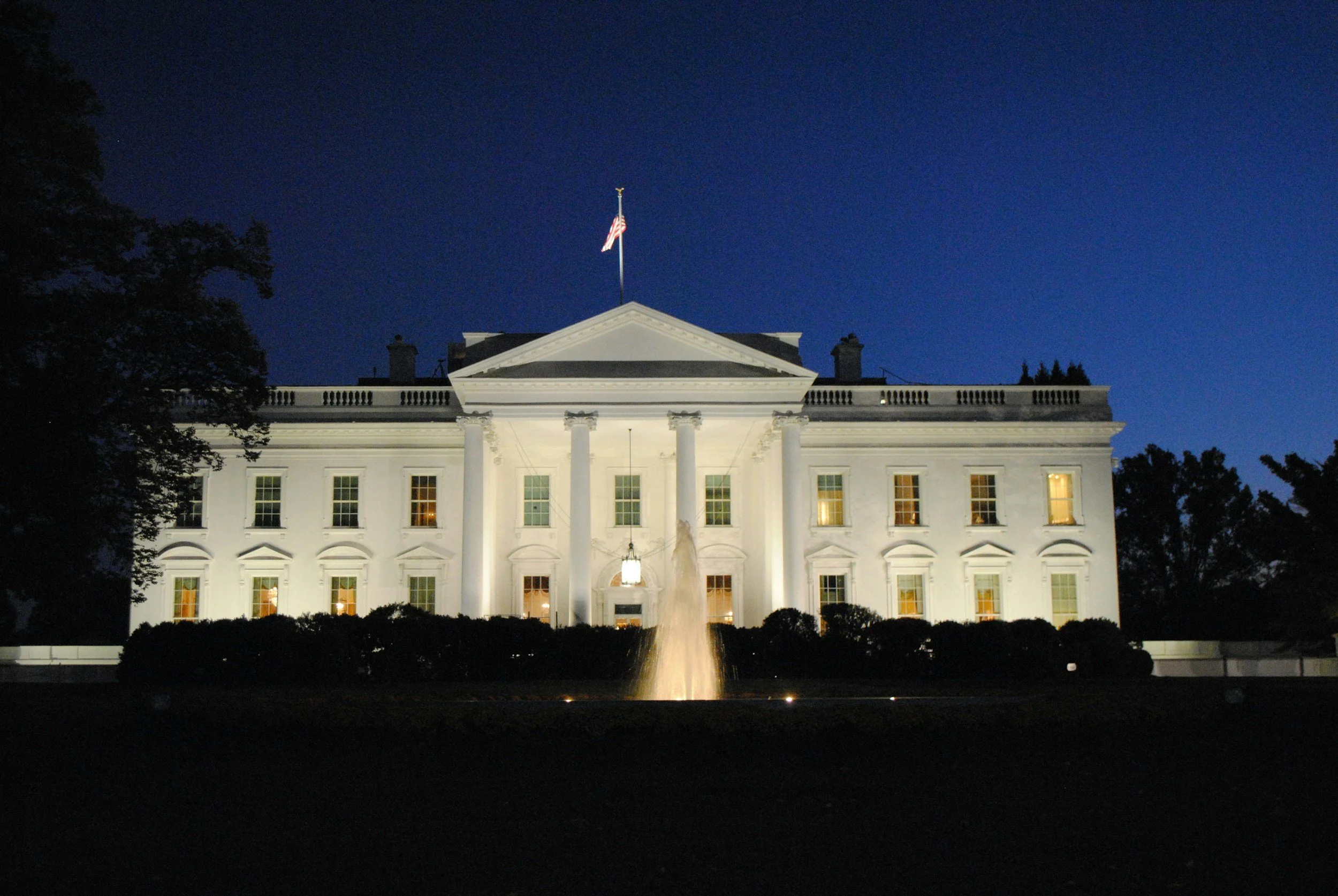The New Mandate: Commercialization, Consolidation & the Future of Federal Acquisition
The federal acquisition ecosystem is entering a new phase—one defined not just by innovation, but by a clear executive-branch mandate toward commercialization, cost discipline, and regulatory streamlining. We’re seeing the most sweeping reform to federal acquisition in decades with the Revolutionary FAR Overhaul (RFO) ushering in a renewed movement toward simplifying, modernizing, and commercializing how the government procures goods and services. For both government buyers and industry sellers, the implications are profound. And getting ahead of this shift is no longer optional.
While all industries are affected by advancing technology trends, budget constraints, and employment elasticity, the federal acquisition community stands at a particular inflection point - now pushed toward a more commercial, lean, and cost-conscious model. What once required lengthy, custom-built contracting cycles will soon favor commercial solutions, standardized vehicles, and dynamic compliance.
The Executive Orders Shaping the New Acquisition Landscape
In case you’ve been living under a rock for the last six months, here’s a summary of the biggest drivers of this reform:
· “Restoring Common Sense to Federal Procurement” (April 15, 2025): Directs the FAR Council and OFPP to strip the FAR of provisions not statutorily required or essential for usability, procurement effectiveness, or national/economic security.
· “Ensuring Commercial, Cost‑Effective Solutions in Federal Contracts” (April 16, 2025): Mandates that agencies procure commercially available products and services to the maximum extent practicable, and requires formal justification for non‑commercial procurements.
· Executive Order 14240 (March 20, 2025): Consolidates domestic procurement of common goods and services under GSA, entrusting GSA with managing centralized contracts and vehicles.
· Executive Order 14265 — “Modernizing Defense Acquisitions and Spurring Innovation in the Defense Industrial Base” (April 9, 2025): Focused on DoD, emphasizing speed, flexibility, risk‑reward, and modernization of the acquisition workforce.
Together, these directives are stacking the deck in favor of commercial solutions, regulatory simplification, centralized acquisitions, and faster acquisition cycles. For the IT industry, which sits at the heart of federal modernization, these changes are especially consequential and they represent both a moment of opportunity and disruption. The government now presumes technology solutions should be commercial unless justified otherwise. IT firms must reclassify offerings as commercial, emphasize configurability and modularity, and align IP rights to commercial norms. Procurement volume may shift toward government‑wide contracts like GSA MAS and Best‑in‑Class vehicles in the near future, and contractors must secure positions on these vehicles or partner strategically to maintain market access.
Considerations:
· Treat compliance as a living system, not a static checklist.
· Embed greater agility into your business processes.
· Stay active in industry associations and rule-making forums shaping the new Strategic Acquisition Guidance.
New fair‑opportunity rules and higher protest thresholds should accelerate task‑order awards. Contractors will need to improve order agility, pricing responsiveness, and bid/no‑bid discipline. Once agencies sort out the wheat from the chaff as it relates to the RFO, I think we’ll see Contracting Officers adopting more concise, performance‑based solicitations and IT firms will need to modernize their proposal processes, automate compliance, and emphasize mission outcomes over boilerplate language.
Even as the RFO promises modernization, several challenges remain: statutory constraints, uneven implementation via deviations, legal ambiguity between statutory and non‑statutory provisions, and the potential for varying interpretation across agencies. I think contractors should expect a heterogeneous environment for at least 12–18 months while agencies adjust.
Here are some things that are top of mind for me as I think about the future for both buyers and sellers in this emerging government marketplace.
Commercial Acquisition Becomes the Default
The days of defaulting to bespoke, Part 15-style procurements are ending. Under the RFO, FAR Parts 12 and 13 are being merged, making commercial procedures the standard acquisition method for most technology and professional services. Agencies will have to justify any decision to buy non-commercially.
What it means for contractors:
· Position all offerings as commercially adaptable, emphasizing configurability rather than customization.
· Highlight commercial use cases and scalability in proposals.
· Expect faster, more price-driven evaluations.
In short, success will favor firms that can market their software, cloud, or managed services as true commercial solutions rather than government-only products.
Centralized Contracting and Required-Use Vehicles
The RFO redefines how the government sources common IT products and services. FAR Part 8 is being streamlined, with ordering procedures moved to the GSAM and new “required-use” vehicles for categories such as IT, cloud, and cybersecurity.
This is part of a broader move toward centralization—leveraging GSA, Best-in-Class (BIC) contracts, and shared services to eliminate duplicative agency vehicles.
What it means for contractors:
· Future growth will hinge on your presence in GSA MAS, GWAC, or BIC vehicles.
· Expect fewer one-off agency IDIQs and more cross-agency competitions.
· Sharpen your pricing, catalog strategy, and GSA compliance readiness now.
The procurement landscape is consolidating. To stay relevant, contractors must be where the government is buying right now vs. how it did procurement in the past.
Clause Simplification and Four-Year Sunset Rule
One of the RFO’s most transformative moves is the introduction of a four-year sunset for all non-statutory FAR provisions. Clauses that aren’t required by law will automatically expire unless renewed. Many compliance details will migrate into Strategic Acquisition Guidance (SAG) - agency playbooks that are advisory and not binding.
What it means for contractors:
· The FAR will shrink, but compliance will become more dynamic.
· Contractors must actively monitor which clauses are valid and which have expired.
· Internal templates, certifications, and compliance systems must be flexible and updatable.
This sunset model will reward agility. Firms that can quickly adapt to a lighter, evolving rule set will minimize overhead and stay compliant while competitors scramble.
Streamlined Solicitations and Documentation
The new FAR removes repetitive cross-references, redundant clauses, and verbose instructions. Solicitation language across Parts 34–52 is being rewritten for clarity and brevity. Evaluation procedures are also shifting toward performance and comparison-based assessments rather than box-checking compliance.
What it means for contractors:
· Proposals will need to be crisper, cleaner, and more performance-focused.
· Legacy boilerplate language could backfire—agencies will expect modernized, lean responses.
· Proposal automation and compliance-tracking tools will become essential to keep up with version changes.
Firms that modernize their proposal workflows—integrating AI-based drafting and modular content libraries—will respond faster and more accurately than those still bound by outdated formats.
New Rules for Task Orders, BPAs, and Fair Opportunity
The overhaul revises FAR Part 16 to clarify ordering under multiple-award IDIQs and BPAs. A new FAR 16.507 adds standardized fair opportunity rules, off-ramp procedures, and unified protest thresholds. For IT contractors - whose work is often performed under large vehicles like Alliant, Polaris, or CIO-SP—these adjustments are critical.
What it means for contractors:
· Task order awards will accelerate as agencies adopt consistent, higher protest thresholds.
· Evaluate whether to prime or subcontract under each vehicle, balancing opportunity and compliance risk.
· Update internal pricing and workflow models to align with new ordering thresholds and faster cycles.
In short, the government is trying to make ordering from existing vehicles simpler, faster, and less protest-prone. Contractors who understand the new rules will compete more effectively within those ecosystems.
How Buyers and Sellers Must Adapt
The executive orders of spring 2025 mark the beginning of a new acquisition era—one defined by commercial rigor, regulatory compression, and strategic agility. Both government and industry must adjust not just to new rules but to a new mindset. Success will favor those who combine innovation with efficiency, and agility with accountability.
Federal buyers must adapt their structures and culture to the commercial-first and cost-efficiency mandates now embedded in federal policy. Key actions include adopting modular acquisition, investing in technical skills, aligning with GSA consolidation, and proactively engaging industry. Contractors need to reposition themselves as commercial-ready, modular, and transparent. Solutions should emphasize interoperability, cost realism, and commercial standards. Engaging in FAR reform comment cycles and aligning business models with centralized vehicles like GSA will be critical.
This is a sea change that will absolutely affect business development and capture strategies. The winners in this new era will be those who think like both technologists and acquisition strategists—blending innovation with disciplined execution.



